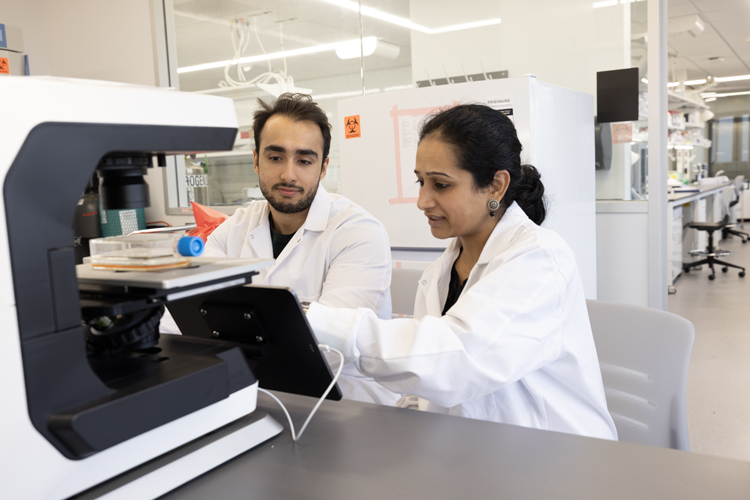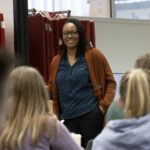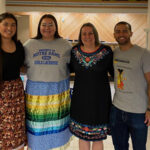When a person is healthy, a bone fracture commonly heals by itself. But for people with osteoporosis, diabetes or cancer, bone fractures are stubbornly resistant to healing. With no known drug available to promote healing after fracture, the solution often is surgery to insert a screw or rod.
Priya Premnath’s creative detective work has revealed that an existing anti-cancer drug known as UC2288 can be repurposed to treat bone healing, a discovery that could lead to a potential noninvasive treatment.
How did Premnath, an assistant professor of biomedical engineering, connect a cancer drug to bone healing? She began by looking at what was needed to heighten the body’s capability for bone healing.
Because Premnath also studies how biomaterials behave inside the body, her work involves diving deeply into the cellular environment. She has conducted research on a particular gene, called p21, which is involved in the regulation of multiple cell processes.
She and her lab members worked with mice that were genetically modified to suppress p21. They found that it had a surprising effect on undifferentiated stem cells – those that had not yet matured into specialized kinds of cells in the body, such as blood, muscle or brain cells.
Breakthrough discovery
With p21 blocked, Premnath found that undifferentiated stem cells were “commissioned” to become osteogenic, or bone, cells.
“We found that the change from stem cells into bone cells was increased in these genetically modified mice,” she said. “It works by promoting the differentiation capacity of stem cells into bone cells.”
With this discovery, her lab went searching for a drug that inhibits the expression of p21. It’s not uncommon for a drug used to treat one disease to have a mode of action that’s also effective against another.
Stem cells also serve in the body’s repair system, so it makes sense that osteogenic stem cells are necessary for bone regeneration. But aging and disease takes a toll on the number of bone stem cells available.
“The most glamorous aspect of this work is that the drug reverses the aging process in stem cells,” she said, “We also found it doesn’t kill any of the healthy stem cells at lower concentrations.”
More research is needed to determine why inhibiting p21 affects stem cells differently than cancer cells. Blocking the gene also prevents the proliferation of cancer cells.
From the lab to a possible product
But Premnath and graduate student Sina Jafari are now investigating the drug’s commercial value, starting with participation in the National Science Foundation’s I-Corps program.
UWM hosts a Midwest regional I-Corps site, which trains academics to think like entrepreneurs to commercialize lab discoveries. The entrepreneurial teams are led by graduate students rather than faculty, giving them a new perspective on their academic research. Teams who complete the Midwest program can apply to the national I-Corp program, which Jafari and Premnath completed this summer.
A main component of the training involved customer discovery. Jafari interviewed about 125 people to exactly identify what real-world need the discovery might fill, how potential customers are solving their problems currently, and how much are they paying for it.
“When we started out it was pretty rough,” he said. “We didn’t have a specific kind of consumer in mind, our product wasn’t super-refined, and we had a lot of options of different customers we could go after.”
From Jafari’s interviews and the expert feedback he got afterward, the team identified a particular bone-healing problem: Spinal surgeons would be interested in such a drug to treat osteoporotic women over age 65 who suffer a spinal fracture, which is very common.
The experience has offered Jafari a revelation on what can happen with ideas that spring from the lab. Looking ahead, he said, after earning his doctoral degree, he would like to use it in combination with his training in commercialization to create more products.
“The experience opens you up to thinking how to appeal to those people we wanted opinions from,” he said. “Talking to some of these clinicians and spinal surgeons and seeing how passionate they are about they do, was very inspiring.”







